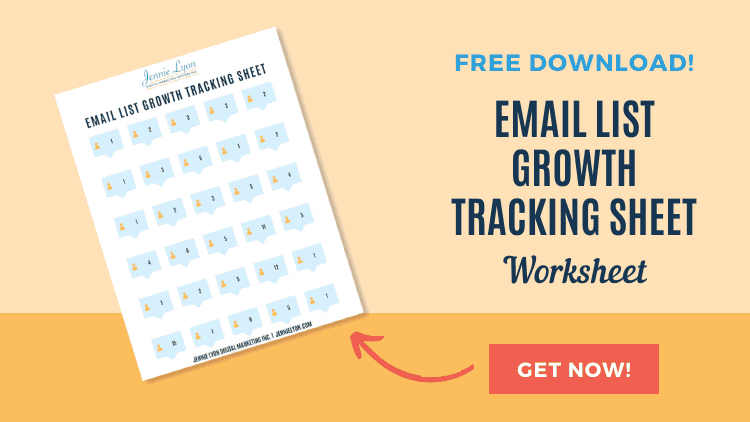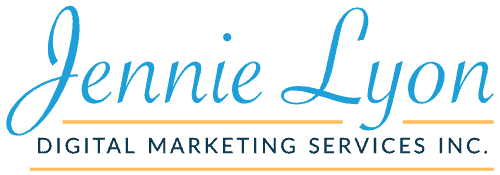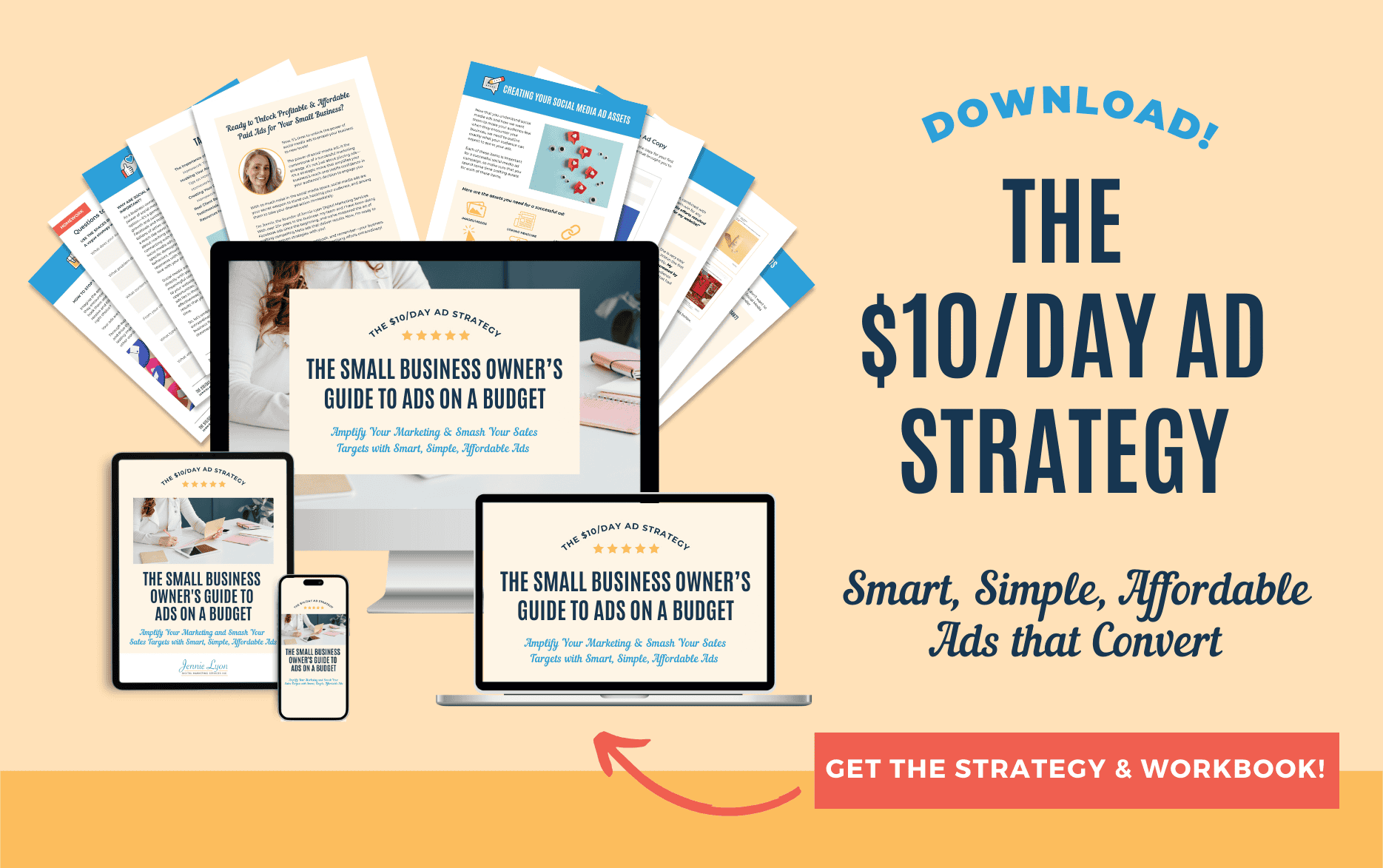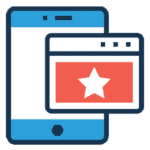TikTok Ban? It’s Time To Build An Email List
The pending TikTok ban has caused quite a stir among small business owners who have relied heavily on the platform to build their businesses.
With the potential loss of a significant marketing channel, it has become even more critical for small business owners to diversify their marketing strategies and explore other options.
One such option is email marketing, which has been a reliable and effective way to reach customers for decades. Businesses can maintain direct customer communication and drive sales by building a solid email list and developing engaging email campaigns.
Additionally, email marketing can be personalized and tailored to specific customer segments, making it a highly targeted approach. While the potential TikTok ban is certainly concerning for businesses, it serves as an essential reminder of the need for a diversified marketing strategy that includes multiple channels, my favorite being email marketing.
And the best part? You OWN your email list, so it can’t disappear overnight. P.S. It still has the highest ROI of online marketing, so if you aren’t on the email list bandwagon, it’s time.
Today, I will dig into how to start building an email list so you aren’t entirely reliant on TikTok or any other social media platform for your business success.
🔹Don’t Put All Your Egg#Don’t-Put-All-Your-Eggs-in-One-Marketing-Baskets in One Marketing Basket
🔹Why Having an Email List is Important
🔹The Differences between Social Media Marketing and Email Marketing
🔹Choose an Email Marketing Platform
🔹Start Building an Email List with a Free Lead Magnet
🔹How to Get the Most Out of Your Email Marketing
🔹The Best Types of Free Lead Magnets
🔹Creating a Free Lead Magnet that People Can’t Resist
🔹How to Create a Nurture Sequence for Your Free Lead Magnet
🔹How to Turn Your Free Lead Magnet into a Full Cycle Sales Funnel
Don’t Put All Your Eggs in One Marketing Basket
It’s risky to put all your marketing and sales eggs in one basket, especially when that basket is a social media platform subject to sudden changes or even shutdowns. Like any other social media platform, TikTok is not immune to the risk of being banned or losing popularity among its users. By relying solely on TikTok for your marketing efforts, you risk losing your entire customer base and revenue stream if the platform disappears. Just think back to Vine or Periscope (both came in hot and heavy and fizzled out quickly).
Diversifying your marketing strategy across multiple channels, such as email marketing, social media, content marketing, paid advertising, and more, can help mitigate this risk and ensure your business remains strong and profitable, even if one channel experiences disruption.
Why Having an Email List is Important
Email marketing has been around for a long time, but it remains a powerful tool for businesses to connect with their audience. Here are just a few reasons why email marketing is so valuable:
Direct communication: Unlike social media, email lets you communicate directly with your audience, where they spend much of their time in their inbox. This means that your message will be seen by the people who have already expressed interest in your brand.
Personalized messaging: With email, you can segment your audience and send personalized messages that speak directly to their interests and needs. This makes your messaging more effective and can lead to higher engagement rates.
Higher engagement rates: Email marketing consistently shows higher engagement rates than social media. According to a study by Campaign Monitor, the average open rate for email campaigns is 17.92%, while the average engagement rate for Facebook posts is just 0.09%. For all my clients, we strive to have 20-30% open rates.
Comparison of Email Marketing vs Social Media Marketing
While social media can be a valuable tool for businesses, it’s essential to understand the differences between social media marketing and email marketing.
The Differences Between Social Media Marketing and Email Marketing
Ownership of the audience: When you build an email list, you own that list. This means you have direct access to your audience and don’t have to worry about algorithm changes or platform shutdowns affecting your reach. With social media, the platform owns the audience, and you are subject to its rules and regulations.
Algorithm changes and reach: Social media algorithms are constantly changing, and this can affect your reach. With email, you have a more direct line of communication with your audience, and your message is less likely to get lost in the noise.
ROI: While social media can be a cost-effective way to reach your audience, email marketing consistently shows a higher ROI. According to a study by DMA, email marketing has an average ROI of $42 for every $1 spent.
How to Choose an Email Marketing Platform
Selecting the ideal email marketing platform is crucial for the success of any digital marketing strategy. Firstly, assess your specific needs and goals. Consider factors such as the size of your subscriber list, desired level of automation, and integration capabilities with other tools or platforms you use. Next, evaluate the platform’s features, including email templates, segmentation options, A/B testing capabilities, and analytics. Look for intuitive user interfaces and customizable workflows that align with your workflow preferences. Additionally, consider the platform’s deliverability rates and compliance with data protection regulations to ensure your emails reach your audience and adhere to legal standards. Finally, compare pricing plans and scalability options to find a solution that fits your budget and accommodates future growth. By carefully considering these factors, you can choose the best email marketing platform to engage your audience and effectively drive results for your business.
How to Start Building an Email List with a Free Lead Magnet
First, you need a freebie that your audience can’t help but leave their email address in exchange for. Creating an email-free lead magnet is critical in building your email list. An email-free lead magnet is a form that allows visitors to your website to subscribe to your email list.
1. Keep it simple:
Your free lead magnet form should be simple and easy to use. Avoid asking for too much information, as this can be a barrier to entry. Typically, asking for a name and email address is enough.
2. Offer incentives and lead magnets:
Providing an incentive or lead magnet in exchange for someone’s email address is an effective way to build an email list. This could be a free ebook, a discount code, or access to exclusive content.
3. Make it prominent:
Your free lead magnet form should be prominently displayed on your website so visitors can easily find it. Consider placing it in a sidebar, header, or footer.
4. Use clear language:
Your free lead magnet form should use clear and concise language that explains the benefits of subscribing to your list. Ensure visitors understand what they will receive and how often they hear from you.
5. Test and optimize:
Test different versions of your free lead magnet form to see what works best. Try different headlines, images, and calls to action to see what drives the most sign-ups.
How to Get the Most Out of Your Email Marketing
Permission-based marketing: Always get permission before adding someone to your email list. This means using free lead magnet forms and clarifying what they are signing up for.
Segmentation and personalization: Segment your email list based on interests and behaviors, and send personalized messages that speak directly to your audience.
Consistency and frequency: Be consistent with your email marketing efforts, but find a frequency that works for you and your audience.

FREE RESOURCE: Email List Growth Tracking Sheet
The Best Types of Free Lead Magnets
1. E-books:
E-books are a great way to provide in-depth information on a specific topic. They can be downloaded and read at the reader’s convenience, making them popular.
2. Checklists:
Checklists are valuable tools that help readers stay organized and on track. They are easy to consume and can be used right away.
3. Templates:
Templates help readers save time and effort by providing a pre-made framework for a specific task. They are often used in design, social media, and email marketing.
4. Webinars:
Webinars are live or recorded online events that provide valuable information on a specific topic. They can be interactive and engaging, making them popular for many audiences.
5. Resource lists:
Resource lists are curated collections of tools, apps, and other resources that help readers solve a specific problem or achieve a particular goal. They are easy to consume and provide immediate value to the reader.
6. Free trials, demos, or coupon codes:
Free trials or demos allow readers to try a product or service before committing to a purchase. They are popular choices for software and SaaS companies. Coupon codes work well for businesses that sell physical products!
7. Quizzes or assessments:
Quizzes or assessments help readers learn more about themselves or their business by answering questions. They can be fun and engaging, making them popular for many audiences.
Pop-ups and sign-up forms: Pop-ups and sign-up forms can effectively capture an email address when someone visits your website.
Social media promotions: You can also promote your email list on social media by creating posts or ads that direct people to your sign-up form.
If you need help deciding what type of core lead magnet to offer, grab our free workbook to get started!

FREE RESOURCE: How to Identify Your Core Lead Magnet
Creating a Free Lead Magnet that People Can’t Resist
Creating a free lead magnet your audience will love requires careful planning and execution. Here are a few best practices to keep in mind:
1. Know your audience:
Understanding your audience’s needs and interests is key to creating a free lead magnet that resonates with them. Consider conducting surveys or focus groups to gather feedback and insights.
2. Provide value:
Your free lead magnet should provide real value to your audience. It should help them solve a problem, achieve a goal, or learn something new.
3. Keep it relevant:
Your free lead magnet should be relevant to your brand and aligned with your marketing strategy. It should help you attract and retain your target audience.
4. Make it visually appealing:
The design and presentation of your free lead magnet matter. Make sure it looks professional and visually appealing, with clear, easy-to-read text and images.
5. Make it easy to consume:
Your free lead magnet should be easy to consume and use. Consider providing step-by-step instructions or tutorials to help your audience get the most out of it.
How to Create a Nurture Sequence for Your Free Lead Magnet
Crafting a nurture sequence to complement your email-free lead magnet is essential for guiding subscribers from initial interest to becoming engaged customers. Begin by understanding your target audience’s pain points and interests and aligning your content with their needs. Start the sequence with a warm welcome email that delivers the promised lead magnet and sets expectations for future communications. Follow up with educational content that provides value and establishes your expertise in the field.
Incorporate storytelling and personalization to make the emails relatable and engaging. Gradually introduce your products or services throughout the sequence, showcasing how they address subscribers’ challenges or enhance their lives. Utilize calls-to-action strategically to encourage further engagement, such as inviting subscribers to follow you on social media, attend a webinar, or schedule a consultation. Maintain consistency in frequency and timing to keep your brand top-of-mind without overwhelming subscribers. Finally, monitor the sequence’s performance through analytics and iteration, adjusting content and timing based on subscriber behavior and feedback to optimize engagement and conversions.
How to Turn Your Free Lead Magnet into a Full Cycle Sales Funnel
Utilizing your lead magnet and nurture sequence within a comprehensive sales funnel can effectively guide potential customers through each stage of the buyer’s journey, from awareness to conversion. Here’s how you can integrate them:
Attract Stage (Top of Funnel):
Offer your lead magnet a valuable resource to attract prospects and capture their contact information. This could be through a landing page, social media promotion, or blog post. The lead magnet should address a specific pain point or provide a solution that resonates with your target audience.
Engage and Educate Stage (Middle of Funnel):
Once prospects have opted in to receive your lead magnet, nurture them with a sequence of follow-up emails designed to engage and educate. Use this opportunity to build trust, deliver additional valuable content related to the lead magnet topic, and establish your expertise in the field. Incorporate storytelling, testimonials, and case studies to make the content relatable and compelling.
Convert Stage (Bottom of Funnel):
As subscribers progress through the nurture sequence, gradually introduce offers and promotions for your products or services. Highlight how your offerings can address their specific needs or pain points identified earlier in the funnel. Include clear calls-to-action (CTAs) that encourage subscribers to take the next step, such as purchasing, scheduling a demo, or requesting more information.
Close Stage:
Once subscribers have shown interest in your offerings, focus on closing the sale by providing additional incentives, such as limited-time discounts or bonuses, to encourage them to take action. Use personalized messaging and targeted follow-up emails to address any remaining objections and facilitate decision-making.
Delight Stage:
After a purchase, continue to engage with customers and provide ongoing value to foster brand loyalty and encourage repeat business. This could include sending post-purchase thank you emails, providing exclusive offers or content, and soliciting feedback to improve the customer experience.
By leveraging your lead magnet and nurture sequence within a full-cycle sales funnel, you can attract, engage, and convert prospects into satisfied customers, ultimately driving revenue and growth for your business. Regularly monitor and optimize each funnel stage to maximize effectiveness and improve results.
This Week’s Building an Email List Homework:
- Take a look at your marketing strategy. How heavily are you focusing on social media marketing vs. email marketing? Is it time for an adjustment?
- Create a free lead magnet if you haven’t already done so. Grab our free workbook to walk you through the process.
- Open an email marketing account with the platform of your choice. I recommend a free trial with MailChimp if you’re starting.
- Please set up your website’s free lead magnet and start marketing it on social media.
- Grab my new FREE Email List Building Checklist. It’s a VERY simple 7-week step-by-step list-building checklist outlining all the steps you need to take to start growing that list as soon as possible.
While email marketing is an effective tool, having a diversified marketing strategy is essential. Relying solely on social media can be risky, as the recent TikTok ban has shown.
The pending TikTok ban is a reminder of the importance of having a diversified marketing strategy that includes email marketing. Email marketing is a powerful tool that can help you connect with your audience more directly and personally. By building an email list and following best practices, you can ensure your messaging is effective and reaches your audience. Don’t rely solely on social media – diversify your marketing strategy to ensure long-term success.
If you need any help building or growing your email list, we’re here to help; please schedule a free consultation anytime. Here’s to your continued growth and success in the digital age!
Links for This Episode on How to Build an Email List
- List Building Checklist
- How to Choose Your Core Lead Magnet
- Schedule a free call with Jennie today!
https://jennielyon.com/chatwithjennie - How to Use our Digital Marketing Team
Get in touch with Jennie:
🔹Free Consultation
https://jennielyon.com/chatwithjennie
🔹Jennielyon.com
🔹Social Media @jennielyonmarketing
Rate, review, and subscribe to Apple Podcasts.
If you like what you hear on the podcast, please consider rating and reviewing my show! Woo Hoo! Click here, scroll to the bottom, tap to rate with five stars, and select “Write a Review.” I would love to hear what episodes you enjoy the most! If you still need to do so, please subscribe to the podcast. I’ll be adding new content weekly. If you’re not subscribed, you’ll likely miss out. Subscribe now!






















